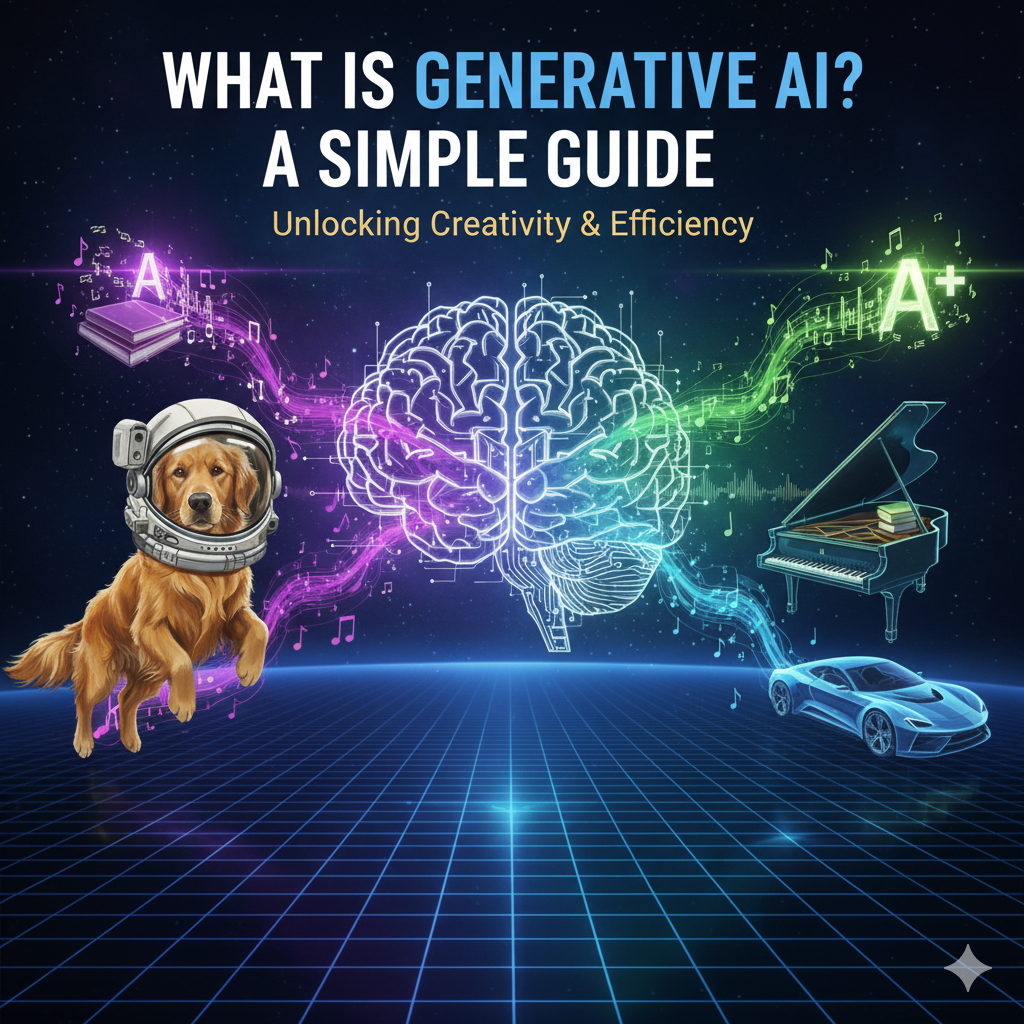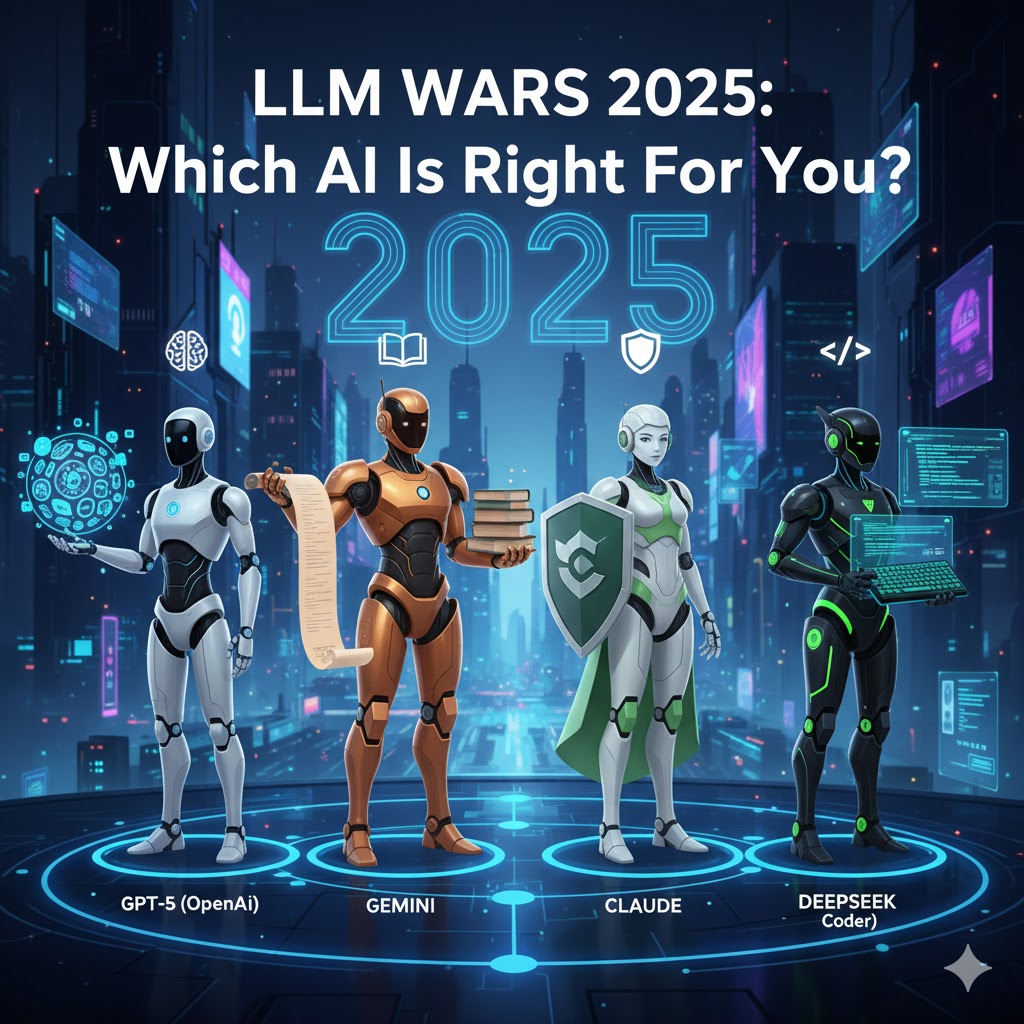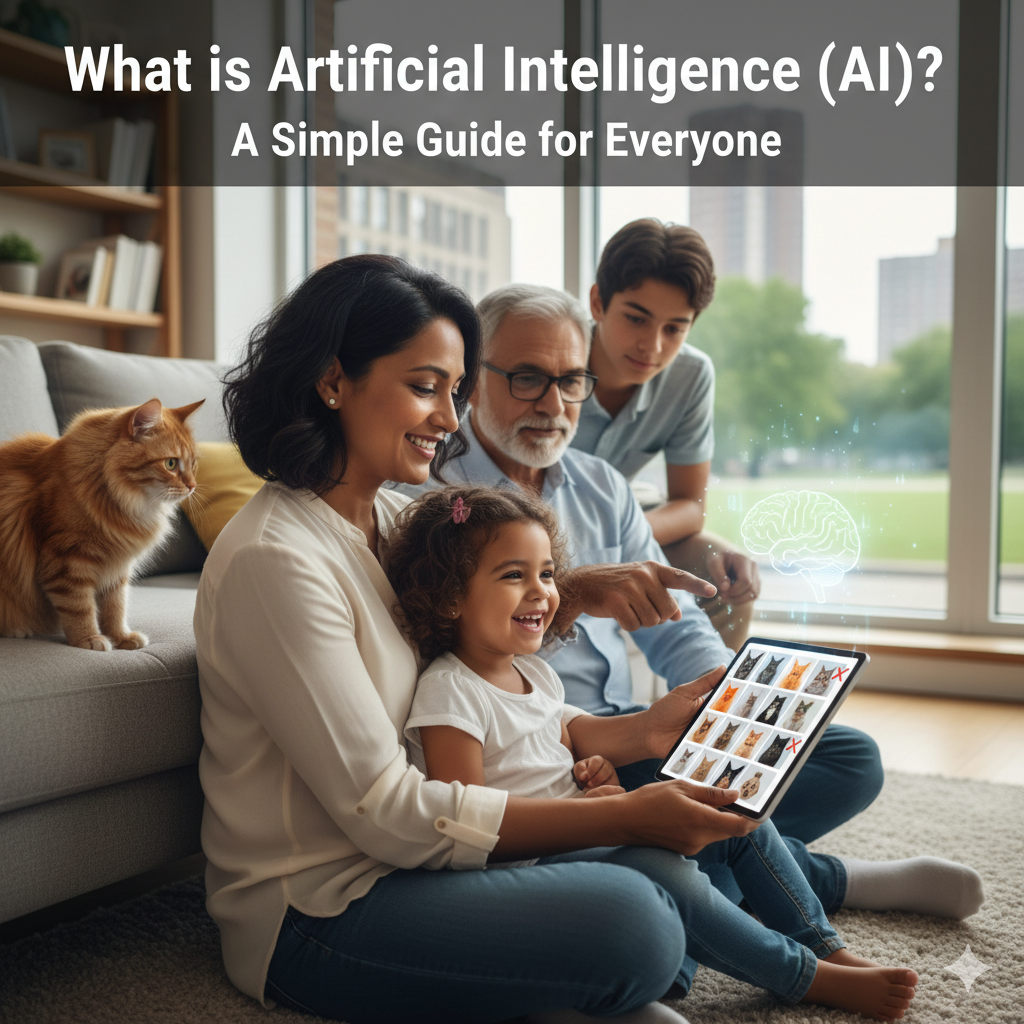Ever feel like you’re hearing about “Generative AI” everywhere? It’s the tech behind a lot of the cool (and sometimes weird) stuff you see online, from amazing art to super-smart chatbots. But what is it, really?
If you’ve ever wanted a simple explanation of what generative AI is, how it works, and how you can use it, you’re in the right place. Let’s break it down.
What is Generative AI?
At its core, generative AI is a type of artificial intelligence that creates brand-new things.
Think about it this way: a regular AI might look at a thousand pictures of dogs and learn to tell you if a new picture has a dog in it. That’s cool, but a generative AI can take what it learned from those thousand pictures and create a completely new, original picture of a dog that has never existed before.
It’s like a super-powered creative partner. It learns from tons of existing data such as text, images, or music and then uses that knowledge to instantly generate something fresh when you ask it.
How Does It Actually Work?
The technology behind it is pretty complex, but we can explain it with a simple story about two AIs working together.
Imagine you have two characters:
- The Artist (The “Generator”): Its job is to paint a picture of a cat.
- The Art Critic (The “Discriminator”): Its job is to guess if the painting is real or AI-made.
The Artist paints a cat and shows it to the Critic. At first, the paintings are terrible, and the Critic easily spots them as fakes. But every time the Critic says “nope, that’s fake,” the Artist learns and gets a little better. This back-and-forth happens millions of times, until the Artist gets so good that it can paint a cat so realistic that the Critic can’t tell the difference anymore.
That’s the basic idea! Through this process, the AI gets incredibly good at creating high-quality, original content.
Real-World Examples
Generative AI isn’t just a science experiment; it’s already in tools you can use right now.
AI Writing Assistant
Need a catchy title for your presentation or a quick summary of a long report? Instead of staring at a blank screen, you can ask an AI.
Your Prompt: “Write 5 catchy email subject lines for a 20% off sale.”
AI Output:
- 20% Off Everything? Yes, Please!
- Your Next Favorite Thing is Now on Sale
- Don’t Miss Out! 20% Off Ends Soon
- A Little Treat for Your Inbox (and Your Wallet)
- Ready, Set, SAVE! 20% Off Inside
Turn Your Words into Pictures
This is where things get really fun. You can just describe an image, and the AI will create it for you out of thin air.
Your Prompt: “A majestic golden retriever wearing a proper astronaut helmet, floating in space with Earth in the background, in a whimsical, painterly style.”

This incredible tool is changing the game for artists, designers, and anyone who wants to bring their ideas to life visually.
Your Personal AI Music Composer
Generative AI can even write original music. Just tell it the genre and mood you’re looking for, and it can create a full track. This is huge for video creators, game developers, or anyone who needs royalty-free music.
A Helping Hand for Coders
Developers use generative AI to write and fix code faster. It can act like a programming partner that suggests code snippets and helps troubleshoot problems, letting coders focus on the bigger picture.
Prompt: “Write a Python function to calculate the factorial of a number.”

Impact of Generative AI in other fields
This technology is popping up in almost every industry:
- Marketing & Content Creation: Businesses are using it to draft blog posts, social media updates, and ad copy in minutes.
- Art & Design: Artists and designers create unique logos, product concepts, and stunning visuals.
- Healthcare: Scientists are exploring how AI can help in designing new drugs and analyze medical data.
- Gaming: Developers are using it to create more realistic and dynamic game worlds and characters.
The Top Generative AI Tools You Should Know
The world of generative AI is growing fast. Here are some of the popular names you’ll hear about:
- OpenAI (ChatGPT & DALL-E 3): The company that brought generative AI to the masses. ChatGPT is the go-to for human-like conversations and text creation, while DALL-E 3 is a powerful tool for turning text into images.
- Google (Gemini): Google’s powerhouse AI model. Gemini is designed to understand not just text, but also images, video, and audio, making it incredibly versatile.
- Midjourney: The top choice for artists and designers. Midjourney is famous for creating incredibly beautiful and high-quality artistic images from simple text prompts.
- Microsoft (Copilot): Your everyday AI assistant. Microsoft has built Copilot into Windows, Office, and more to help you write, summarize, and create, right where you work.
- DeepSeek: A rising star focused on open-source innovation. DeepSeek’s models are known for being extremely capable, especially for coding tasks, offering a powerful alternative to the big tech companies.
If you want to study a detail comparison of these leading AI platforms, please read WHICH AI SHOULD YOU USE IN 2025? A SIMPLE GUIDE
The Future is a Team Effort
Generative AI is more than just a cool new gadget; it’s a total game-changer. It’s here to help us be more creative, work smarter, and solve problems we couldn’t before.
The best way to think about it is not as a replacement for human creativity, but as a powerful new partner. The future isn’t about humans vs. Machines but it’s about what we can create together. So go ahead, give one of these tools a try and see what you can generate!


